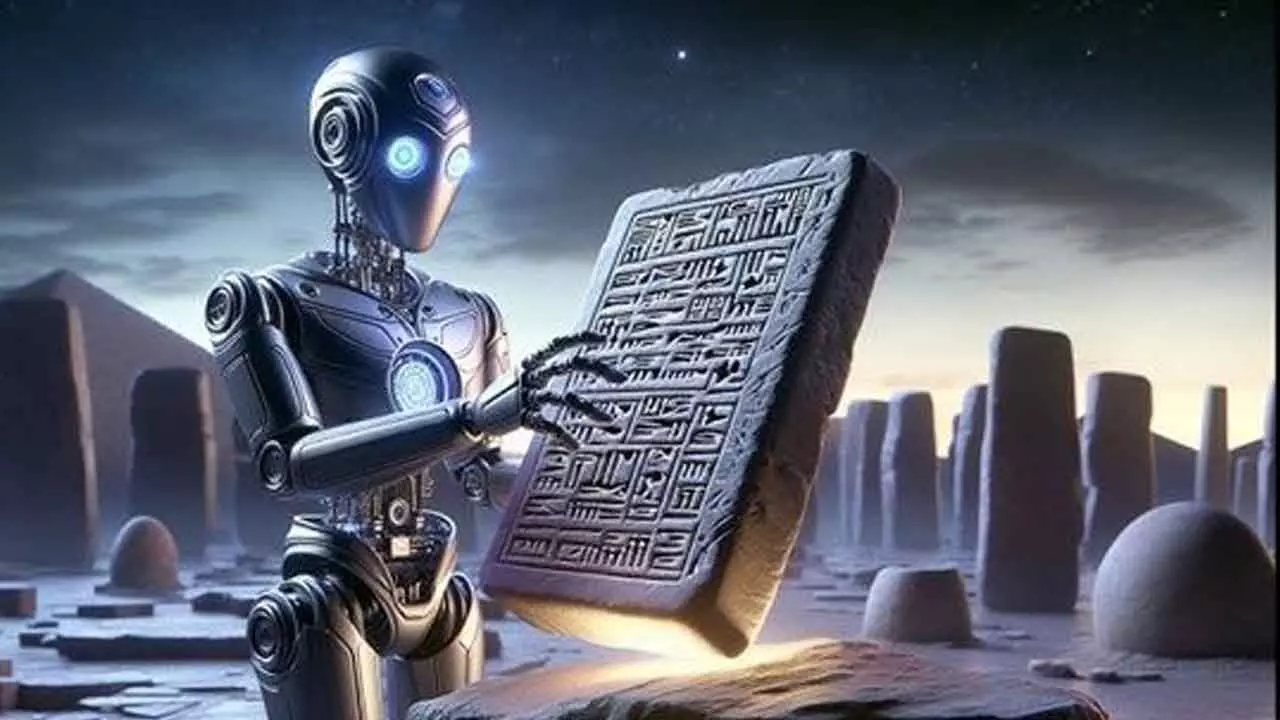From Ancient Secrets To Modern Miracles: How AI Helping Tackle Humanity’S Most Urgent Challenges
Artificial intelligence has become an indispensable force in scientific discovery, bridging the gap between human ingenuity and computational precision
From Ancient Secrets To Modern Miracles: How AI Helping Tackle Humanity’S Most Urgent Challenges

From predicting virus mutations to decoding ancient texts and revolutionizing renewable energy, AI has accelerated progress across disciplines. However, the true potential of this technology lies in ensuring equitable access, fostering collaboration, and addressing global challenges collectively
Imagine the early days of the Covid-19 pandemic in 2019 and 2020, when the world was racing against the clock. Scientists recognized that the virus would evolve, but predicting its mutations was as good as forecasting the weather without any tools. Then, a breakthrough AI tool called EVEscape changed the narrative. This system identified key mutations in the Omicron variant weeks before they became widespread. This foresight provided vaccine manufacturers with a crucial advantage, helping to save millions of lives and shielding economies from the chaos of extended lockdowns. AI accelerated scientific discovery here, transforming once impossible ideas into tangible solutions.
Artificial intelligence (AI) is revolutionizing science by accelerating discovery and opening up new possibilities across various fields. It enables researchers to achieve results in weeks that once took years, significantly shortening the timeline for discovery and compressing decades of work into just months or even days. From healthcare to sustainability, AI-driven innovations are tackling some of humanity's most urgent challenges.
Speed into research processes
Science is often romanticized as a series of genius moments and "Eureka!" discoveries. In reality, much of it normally involves countless hours spent sifting through data. Imagine a cancer researcher facing a mountain of studies. Instead of taking weeks to read through everything, they can use tool to summarize thousands of papers in just hours, pinpointing exactly what they need to advance their research.
Let's take a look inside a genomics lab where researchers are focused on unraveling DNA sequences to identify mutations that cause life-threatening conditions. Recently, this another AI tool called DeepVariant helped identify a rare genetic defect in newborns, enabling doctors to intervene early and save the lives of millions of babies.
Solving biology’s greatest mysteries
For decades, scientists struggled to understand how proteins fold into their complex shapes, a key factor in developing cures for many diseases. This changed with AlphaFold, an AI tool that mapped nearly all known proteins in just months. AlphaFold revealed the structure of a protein crucial to the malaria parasite, which totally accelerated vaccine development.
Accelerating materials discovery
The search for new materials has often been likened to finding a needle in a haystack. Researchers at the Pacific Northwest National Laboratory have made a significant discovery by using an AI tool called GNoMe. This tool has led to the development of a battery material that reduces lithium usage by 70 per cent within just 80 hours. Furthermore, GNoMe has also identified a photovoltaic material that increases solar energy efficiency by 15 per cent. These advancements are paving the way for substantial progress in renewable energy.
Tackling complex problems in Math and Physics
Mathematics and physics are often perceived as fields exclusive to exceptionally intelligent individuals. However, even the brightest minds require assistance at times, and AI is emerging as an invaluable ally. One popular AI tool solved 83 per cent of past International Mathematical Olympiad problems. Imagine tackling challenges designed to confound the world's top students—and completing them in just a few hours.
In the field of physics, AI is pushing the boundaries even further. Google's quantum simulations, powered by AI, have accurately modeled chemical reactions in superconductors. This breakthrough could pave the way for lossless energy grids. Picture an energy future where electricity travels from the source to the socket without wasting a single watt.
Uncovering ancient secrets
Imagine being the first to read words that were written thousands of years ago and lost to history. AI technology is making this a reality. At Herculaneum, scrolls buried by volcanic ash for millennia are finally revealing their secrets. Thanks to AI, researchers have deciphered the Greek word for "health" on one of these scrolls, providing insights into ancient medical practices.
Meanwhile, in the jungles of Central America, AI-powered imaging has uncovered hidden inscriptions on Mayan monuments. These inscriptions have unveiled details about their astronomical observations and calendar systems, reshaping our understanding of this ancient civilization.
The bigger picture: challenges and opportunities
As impressive as the potential of AI may be, it is not a magic solution. Access to AI tools is still unevenly distributed. To bridge this gap, we need to invest in education, encourage interdisciplinary collaboration, and ensure equitable access to technology.
Fortunately, the collaborations we see today are inspiring. Imagine teams of AI specialists and cancer researchers working together to develop personalized treatments or environmental scientists using AI to predict significant conservation breakthroughs. These partnerships surely leverage the true power of AI to solve world problems sooner.

